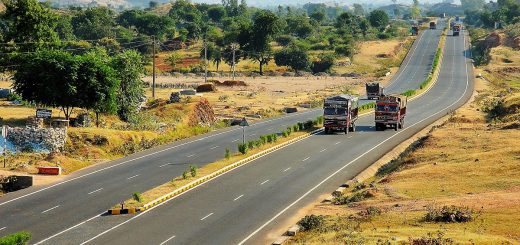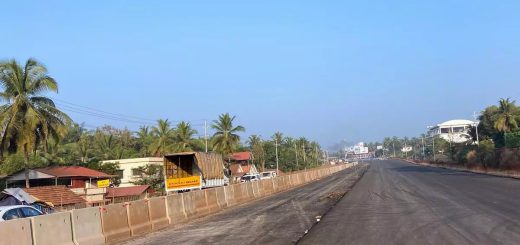Top 10 Fuel Efficiency Tips for Drivers
Due to rising fuel prices and growing environmental concerns, it is more important than ever to improve your vehicle’s fuel efficiency. Certain driving practices and regular maintenance will increase your vehicle’s miles As fuel costs increase and environmental concerns increase. Improving the fuel efficiency of your vehicle has become increasingly important. Using good driving techniques and ensuring regular maintenance can increase your vehicle’s miles per gallon (MPG). This will help reduce carbon emissions and save on fuel costs. Here are seven proven fuel efficiency tips for drivers to use today.
10 Fuel Efficiency Tips
Tip #1: Regular Maintenance Checks
Proper vehicle maintenance directly impacts fuel efficiency. Ensure air filters are replaced regularly, oil changes occur according to manufacturer recommendations, and spark plugs function correctly. Additionally, check the tread depth and tire inflation level. This is because poorly maintained tires create excessive traction and reduce fuel efficiency. Maintaining the vehicle’s optimal performance and reducing fuel consumption requires routine inspections and repairs.
Tip #2: Lose Excess Weight
External devices in the rear or rear seats will reduce fuel efficiency due to additional weight. Removing luggage, toys, or other large items will increase the power-to-weight ratio of your vehicle. This allows for faster acceleration and reduces stress on the engine. Keep only what you need every day. Unload unnecessary items to save energy and improve fuel efficiency.
Tip #3: Optimize Driving Style
Adopt a gentle driving approach by avoiding sudden accelerations, sharp turns, and abrupt stops. Rapid movements force the engine to work harder, burning additional fuel. Accelerate gradually, coast toward red lights, and apply soft brake touches rather than slamming on the pedal. Such behaviors result in smoother rides and considerable fuel savings.
Tip #4: Limit Wind Resistance
Reducing wind resistance enhances fuel efficiency. Roof racks, open windows, and oversized mirrors generate excess drag, forcing the engine to exert more effort to move the vehicle. Remove roof racks when not in use, close windows on highways, and replace large mirrors with streamlined alternatives. Implementing these measures improves aerodynamics and cuts down on wasted fuel.
Tip #5: Smart Route Planning
Strategic routing allows for maximum fuel conservation. Opt for highway commutes over city streets where feasible since higher speeds burn through fuel faster. Consider combining errands into single trips to limit start-stop cycles that waste precious energy. Lastly, utilize online resources such as Google Maps to pinpoint the shortest distance between destinations, further conserving fuel.
Also Read:- Why Having a Website is Essential for Your Trucking Business
Tip #6: Correct Tire Inflation
Underinflated tires deplete fuel efficiency by creating greater rolling resistance against pavement surfaces. Consequently, engines must compensate by working harder and consuming more fuel. Verify tire pressures monthly and top up as required—ideally when temperatures are cooler for accurate readings. Following this practice maintains optimal PSI values, promotes even treadwear, and bolsters fuel efficiency.
Tip #7: Stay Up-To-Date With Technology
Modern automotive technology often can save fuel as well. A hybrid system combines an electric motor with a conventional internal combustion engine. Resulting in an extra increase in distance. In the same way, Adaptive cruise control adjusts speed according to surrounding traffic patterns. Prevents unnecessary acceleration and deceleration. and more than that An automatic transmission oil heater also allows for faster gear changes and reduced friction loss. Also, explore available options and invest in improvements that provide significant improvements in fuel efficiency.
Tip #8: Strategically Schedule Trips
Combine errands and appointments into one trip to minimize drive times and reduce fuel usage. Starting and stopping frequently lowers fuel efficiency, so grouping tasks limits these instances and conserves fuel.
Tip #9: Stick to Speed Limits
Driving faster than fifty miles per hour lowers fuel efficiency and raises fuel prices considerably. Every 5 mph over 50 mph increases the price of gas by about 20 cents per gallon. To save money on gas and promote safe driving. Always adhere to the speed limit and resist the temptation to speed even when you are accelerating. Following the speed limit saves fuel and helps everyone on the road reach their destination safely.
Tip #10: Use Advanced Driver Assistance Systems (ADAS)
Newer vehicles feature advanced driver assistance systems (ADAS) that help drivers in a variety of ways. Many of these improve fuel efficiency. Adaptive cruise control Predictive speed optimization and regenerative brakes are all available options. However, research shows whether investing in a newer vehicle offers enough fuel efficiency benefits to warrant an upgrade.
Conclusion
Incorporating these Fuel Efficiency Tips for Drivers leads to noticeable differences in fuel consumption and associated expenses. While individual measures may seem insignificant, collectively they produce impressive outcomes. Prioritize regular maintenance checks, remove excess weight, refine driving styles, reduce wind resistance, plan efficiently, maintain correct tire inflation, and leverage technological advances to unlock untapped potential in fuel efficiency. However, have proper knowledge, transform habits, and gain benefits through enhanced frugality and sustainability.




Recent Comments